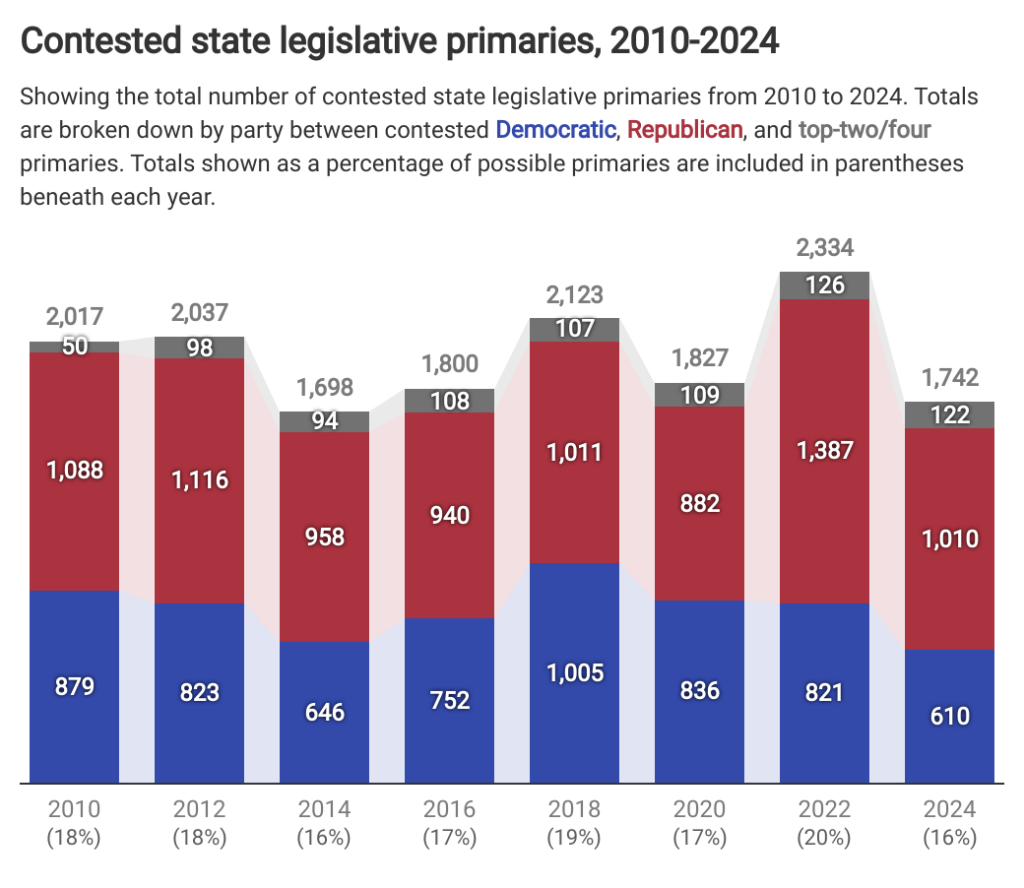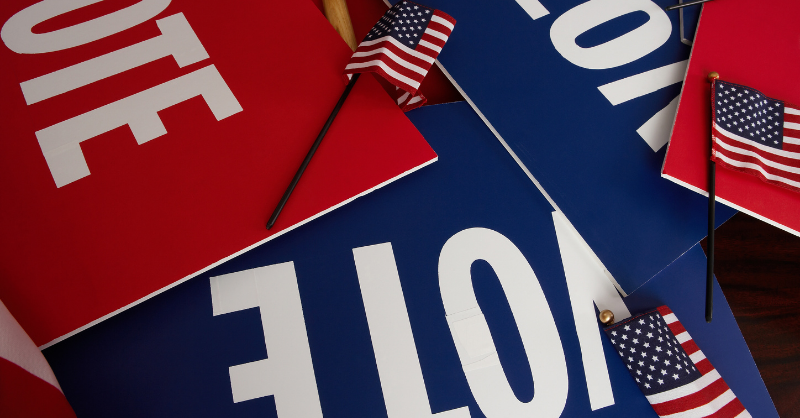This year there are 1,742 contested primaries, meaning 16% of all primaries are contested. This percentage is tied with 2014 (16%) as the lowest percentage of contested primaries since Ballotpedia began gathering data in 2010. Do these historic lows apply to all states, though? More on that below.
Looking at the data for partisan trends, we see that Democrats have the fewest number of contested primaries at 610.

Ballotpedia uses the number and percentage of contested primaries to help determine the overall competitiveness of an election cycle. A greater number of contested primaries indicates more candidates running for office and more choices voters must make. A smaller number of contested primaries indicates fewer candidates and choices on the ballot.
Some more highlights are below.
- There are 610 contested Democratic primaries, representing 12% of all possible Democratic primaries and a 27% decrease from 2020, the last time all 44 states held elections.
- There are 1,010 contested Republican primaries, representing 20% of all possible Republican primaries and a 15% increase from 2020.
- There are 122 contested top-two/four primaries, representing 41% of all possible top-two/four primaries and a 12% increase from 2020.
- The total number of contested primaries—1,742—is down from 2020 (1,827), representing a 5% decrease.
The states with the highest rates of contested primaries are California (62%), Nebraska (60%), and Washington (35%). All three conduct top-two primaries, meaning all candidates are listed on the same ballot. The top two vote-getters advance to the general election, regardless of their partisan affiliations.
Top-two primaries appear to increase the number and percentage of contested primaries, and by extension competitiveness, because candidates across all parties, instead of one party, compete for a limited number of seats. The data support this when we look at California specifically. In 2010, California voters approved Proposition 14, which created the top-two primary system. Only 26% of California's state legislative primaries were contested in 2010 before top-two primaries were implemented. Since 2012, the first year the legislature held elections under the top-two primary system, California has had a contested primary rate of at least 49%. In 2012 alone, the state's rate of contested primaries was 60%, representing an increase of 131% compared to 2010.
To learn about contested primary rates beyond California, click below.


